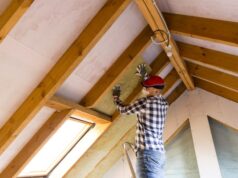
Whether you’re building from scratch or renovating an existing home, having a clear, realistic budget is one of the most important steps in the entire process. A detailed budget planner helps you stay in control of your costs, avoid nasty surprises and make informed decisions along the way.
Costs can quickly spiral without proper planning, especially once you get into variations, fittings and finishes. So before you get too deep into the design stage, it pays to sit down and map out exactly what you can afford—and where you want to spend it.
Start with your total spend
Begin by working out your overall budget. This figure should include everything, not just the builder’s quote. Consider your available savings, any loan approvals, grants or rebates you may qualify for, and your contingency buffer.
Once you’ve got a figure in mind, divide it into clear categories: design, approvals, site works, construction, finishes and furnishings. Make sure you factor in professional fees, permits and connection costs, especially if you’re building on a new block.
It’s also a good time to speak with a lender or financial advisor to understand what you can borrow, what you can comfortably repay and what impact different choices might have on your borrowing capacity.
Construction and labour
The construction phase usually takes up the largest portion of the budget. This includes your builder’s base price and any upgrades to materials or finishes. If you’re renovating, this may also involve demolition, structural alterations and temporary accommodation.
Make sure your builder provides a detailed quote with allowances for key inclusions like electrical work, plumbing, insulation, cabinetry and flooring. Check whether site costs are included or listed separately. Unexpected expenses like retaining walls, tree removal or poor soil conditions can easily add thousands.
Labour rates can also vary depending on your location, so ask for itemised estimates early in the quoting process. If you’re acting as an owner-builder, factor in contractor quotes and the extra time required for coordination.
Materials and finishes
Fittings, finishes and upgrades are where budgets often blow out. Premium tiles, benchtops, tapware and appliances might seem like small costs individually, but they add up quickly when multiplied across rooms.
Start with a realistic scope of what you want, then prioritise where you’ll spend. For example, you might allocate more to your kitchen and bathroom, but opt for simpler finishes in the laundry or bedrooms. The more you can choose up front—such as interior doors, cladding and flooring—the easier it is to stick to your numbers.
Remember that product availability and delivery delays can impact both budget and timeline, so ordering ahead is critical.
Council fees and compliance costs
If you’re renovating or building new, you’ll need to allow for development application fees, permits, inspections and any specialist reports required by your local council or certifier. These could include energy assessments, bushfire zone compliance or heritage approvals.
Don’t forget utility connection fees for water, power, gas and NBN, which can vary significantly depending on the site. Some of these might be included in your builder’s quote, but many are passed on directly to the homeowner.
Design and consultant fees
Working with a designer, architect or draftsperson? Set aside funds early for concept drawings, construction documentation and engineering certifications. If your site is sloped, small or has access challenges, you may also need a land survey or soil test.
Other potential costs include energy rating consultants, town planners, landscape designers or interior stylists. While these add to your upfront spend, they can often help reduce long-term costs and avoid rework.
Contingency buffer
Every project—no matter how well planned—comes with unexpected costs. This could be due to hidden damage, changing your mind or material shortages. As a rule of thumb, set aside at least 10% of your total budget as a contingency. For renovations, especially in older homes, that figure may need to be closer to 15-20%.
Having a buffer gives you flexibility and peace of mind if things shift during construction.
Furniture, appliances and landscaping
These are often left off initial budgets but can be significant by the end of the build. Allocate funds for new furniture, lighting, whitegoods and window furnishings. Landscaping and outdoor works, including fencing, decking or pergolas, should also be planned for in advance so they don’t become an afterthought.
If you’re staging your move-in, you might tackle some of these in stages, but it’s still wise to budget for them early.
Keeping track
Use a spreadsheet or dedicated budgeting tool to track every cost and update it regularly. Your builder’s progress payments, invoices from trades and receipts for purchases should all be recorded. That way, you can spot overspending early and adjust if needed.
Some people prefer to break the budget down room-by-room, while others find it easier to group by trade or phase. Whichever method you choose, consistency is key.
Final tips
- Get multiple quotes for any big-ticket items or services
- Lock in prices where possible to avoid inflation surprises
- Be honest about your priorities—splurge where it matters and scale back elsewhere
- Don’t forget the costs of moving, storage or renting if needed
With a clear plan and a little flexibility, you’ll be in a much stronger position to keep your project on track and on budget.





